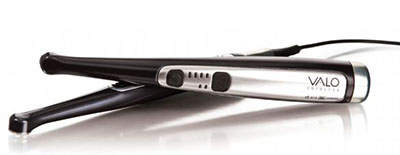Powerful Curing in an Indestructible Package
VALO broad-spectrum output curing lights offer a lightweight design, durable construction, and sleek profile for accessing any area of the mouth
 When it comes to workhorses of the dental practice, the durability of your go-to curing light, digital sensor, or handpiece can be just as important as its effectiveness. This is especially true for the curing light—a device that must rise to the occasion in virtually every restorative procedure.
When it comes to workhorses of the dental practice, the durability of your go-to curing light, digital sensor, or handpiece can be just as important as its effectiveness. This is especially true for the curing light—a device that must rise to the occasion in virtually every restorative procedure.
This is just one of the reasons why Adam Beno, DMD, has relied on Ultradent’s VALO cordless curing light for over 6 years. “I had used numerous curing lights in the past, but when the VALO came out, I was anxious to switch,” he shared. “The VALO offers unmatched durability with its almost indestructible housing—you could literally slam it on the floor, and it would still work. The sales reps love to demonstrate that.”
Where Durability Meets Efficiency
Each VALO curing light is milled from a solid bar of tempered, high-grade aerospace aluminum. This unibody construction, combined with a tempered glass lens, are what give the curing light its exceptional durability and heat dissipation. “Just the peace of mind in knowing this light can survive almost anything and still function makes it one of the most reliable, must-have items in my office.”
In addition to its durability, Dr. Beno appreciates the VALO cordless curing light’s High Power (3-second) and Xtra Power (4-second) curing modes, as well as its low-profile, slim wand design, which comes in handy when treating children or patients with limited openings. “When isolation is a challenge and time is of the essence—for example, when working with children—having the material cured completely in less than 5 seconds is invaluable,” he pointed out.

“Not only does the VALO access difficult-to-reach posterior areas in these patients, it enables us to finish the procedure quickly with its higher-power curing options, which is always appreciated by the patient.”
-Adam Beno, DMD; Fort Meyers, FL
High Intensity for a Complete Cure
VALO cordless produces high-intensity light in the 385 to 515 nm range—an intensity capable of polymerizing all light-curable dental materials, including penetrating porcelain and underlying resin cements. This gives Dr. Beno total confidence that the material has been completely polymerized. “With a simple push of a button, you can switch the curing mode to standard power or adjust the curing time to tack mode for veneers. There are additional tips available specifically designed for certain procedures and uses, which further customizes the light,” he said.
For example, a PointCure magnetic lens provides pinpoint curing of small composites and is helpful for tack curing veneers, while a TransLume green lens aids in locating cracks and subsurface differences. A ProxiCure Ball lens facilitates the building of convex proximal contacts, and a Black Light lens detects fluorescent particles in resins. All lenses are secured to the VALO curing light by a strong magnet inside the lens housing.
“The VALO curing light is so versatile that many of its uses have not even been explored yet,” said Dr. Beno, joking that he has considered giving them to his team members to use as emergency glass breakers or self-defense tools. “All kidding aside, the VALO curing light is one of the best additions to the dental field.”
 The Confidence of a Complete Cure
The Confidence of a Complete Cure
When composite is exposed to light, its reaction depends on the composite’s hue, refractive properties, filler type, filler load, and translucency/opacity. Regardless of these variations, the VALO LED curing light has the ability to provide a complete cure because of its power distribution and output of broad-spectrum light, which effectively penetrates layers of composite.
Meet the Valo Family
Launched in 2009, it features powerful broad-spectrum output, a durable design, and accessibility to any area of the mouth.
Launched in 2011, it offers the same curing capabilities of the original VALO curing light with the freedom of a cordless wand.
Launched in 2016, it has the added benefit of a 50% bigger lens— making it easier to cure a large surface area quickly and effectively.




